This is a special edition of the ‘AI World’ video series covering the release of OpenAI-o1 (alias Q* and Strawberry). By whatever name, this is a very powerful new kind of model that has demonstrated remarkable reasoning abilities.
The video starts with a look back in time at “Move 37” – an iconic moment in AI history during the 2016 match between AlphaGo and Lee Sedol. That was a moment when the world saw AI do something that looked a lot like reasoning or strategy, and the latent promise implied by that moment seems to coming to life at this very moment.
For its storyline, the video draws on two very recent papers (and very important) papers:
- “Generative AI’s Act o1: The Agentic Reasoning Era Begins” by Sequoia Capital
- “Learning to Reason with LLMs” by OpenAI
First, to illustrate the new model’s capabilities, the video showcases that model’s success at decoding an encrypted message, which is definitely not something that a basic language would be able to do.
And with that as context, the focus then turns to the Sequoia Capital investment hypothesis, which is that considerable value will be be unlocked by companies that apply agentic AI in a domain-specific context, especially if those use cases target specialized pools of work. To illustrate this, the video presents XBOW, which is a company that’s been able to use agentic AI to replace highly-skilled experts that do cyber-security penetration testing.
Building on the implications of that example, the video concludes with reflections on the enormous potential impact of these new capabilities – opportunities and risks that can be measured in the trillions of dollars.












